Long Branch rifle ranges, Small Arms Building, and the Arsenal Lands
*

Military history mural at front of Small Arms building, which was designated as a heritage site under the Ontario Heritage Act in 2009, as a result of a community initiative led by Jim Tovey who now serves as Ward 1 Councillor in Mississauga. Jaan Pill photo
Update:
In subsequent posts, I’ve begun referring to the Long Branch rifle ranges (that is, “ranges” in plural. Occasionally, the name that is used is “range” (singular).
[End]

Ice formations at the shoreline of Lake Ontario which is located directly to the south Small Arms building. The photo, taken close to the border between Mississauga and Toronto, assists in establishing where the building is located. Feb. 17, 2015. Jaan Pill photo
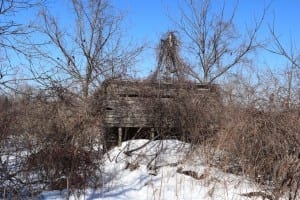
Wooden baffles are among the few surviving remnants of the rifle ranges located in the greenspace south of the Small Arms Inspection Building in Mississauga. Jaan Pill photo

A view of the fence at the south side of the Small Arms building separating the lawn from the parking lot. This is among my favourite photos of the Arsenal Lands area. It evokes for me a sense of the atmosphere at Small Arms Ltd. in the 1940s. Jaan Pill photo
The military history mural currently located at the front of the Small Arms building at Dixie Road and Lakeshore Road East in Mississauga will, as I understand, be moved to the building facade in the spring of 2015.
My most recent post about the Small Arms building, also known as the Small Arms Inspection Building, is entitled:
Click here to access Heritage Mississauga overview of Small Arms Ltd. story >
Gestural quality
I much admire the stylized, gestural quality of the imagery at the Small Arms mural. The mural shows evidence of extensive research, a coherent approach to composition and design, and the coordinated efforts of many artists.
The gestural quality is associated with a sense of energy and vigour that is a source of inspiration for me. I like to think the mural was created under deadline conditions; it’s my belief that such conditions would help to account for the mural’s sense of energy and directness.
The images of the four officers, dressed in green outfits, fit in well with the traffic signs – of trucks entering into a roadway, of kids at play in areas where motor vehicles may be travelling, and the like – in the surrounding area. The images depend upon simplified (yet often expressive) outlines and forms to effectively communicate messages. The entire area in the vicinity of the mural and far beyond is an outdoor museum, is an outdoor art gallery, curated by each passerby.What is art, what is artifact, depends upon curation and context. It depends upon how we define things in everyday life.
Click on the images to enlarge them. Click again to enlarge them further
Figure D, in the detail highlighted at this post, is an especially appealing image. The posture of the officer tells a particular story of a person’s demeanour and experiences in life. His expression is not easy to read; it’s up to each viewer to decide what feeling the expression evokes. The image and the mural as whole constitute an evocative, fully realized work of art.
Archaeological Assessment (Stage 1)
Other properties in the area of the Small Arms building include the G.E. Booth Waste Water Treatment Facility, the Long Branch Rifle Ranges, and the Arsenal Lands.
A July 25, 2013 Lakeview Waterfront Connection Project document, at the Credit Valley Conservation Authority website, entitled Appendix J – Archaeological Assessment (Stage 1), provides the following overview (which I’ve broken into shorter paragraphs) of the Arsenal Lands and Long Branch Rifle Ranges [the document switches between “Range” and “Ranges”; a City of Mississauga document uses the singular form]:
Arsenal Lands
“In 1910,” the document notes, “the Minister of Militia and Defense for the Dominion of Canada purchased part Lot 4 and 5 for a military training facility. Often the term Arsenal Lands is used locally to define the area west of Etobicoke Creek to the former location of the aerodrome site west of the Long Branch Rifle Ranges.
“By the early 1940s a large munitions factory was constructed on the property to support the Second World War and was known as the Small Arms Limited. In addition to the 81,000 square foot factory there existed a water tower, several administration buildings and miscellaneous outbuildings.
“Many jobs became available and Lakeview had a housing boom to shelter the women who came to produce munitions for the men who were overseas.
“After the war, the company became part of Canadian Arsenal Limited and continued to produce a small amount of weapons for the Crown but was later sold due to competition with private companies.
“Since that time, the property has been leased to Ontario Power Generation for use as a training facility for hydro workers, has been used as a drill hall for the Cadet Organization Police School, was sold to Canada Post for use as a sorting and distribution centre and most recently purchased by the TRCA in the early 1990s.
“In 1996 the large factory was demolished. The only surviving structures of the wartime industry are the Small Arms Inspection building built in 1941 and the water tower built in 1910 during World War I.”
Long Branch rifle range
“In 1868,” the document adds, “the Ontario Rifle Association was formed to train militia. At the request of the City of Toronto their base of operation was moved in 1891 from Garrison Commons at Fort York to property in Lakeview which became known as the Long Branch Rifle Ranges.
“The range acted as a training ground for the Department of National Defense during World War II and as the administration offices for the Royal Ontario Air Force. The Long Branch Rifle Range closed its doors in 1957. While the majority of the rifle ranges lay to the west of the study area, a portion is now in the location of the G.E. Booth [Waste Water Treatment Facility].
“Earthen-filled wooden baffles and a concrete backstop [are] the only surviving remnants of the rifle ranges located in the greenspace south of the Small Arms Inspection Building. This area is currently owned by the Region of Peel.”
[End of texts from Credit Valley Conservation Authority website]
The source for the two overviews is a July 25, 2013 Lakeview Waterfront Connection Project document at the Credit Valley Conservation Authority website entitled Appendix J – Archaeological Assessment (Stage 1). If you have information that may account for the ambiguity related to whether we are dealing with a range or ranges, please contact me.

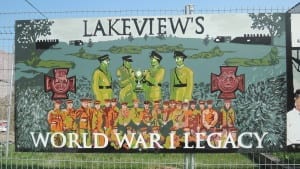
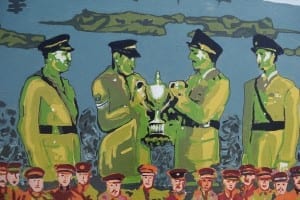
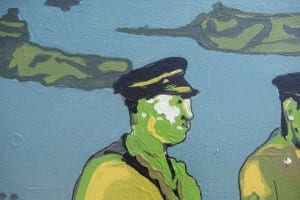
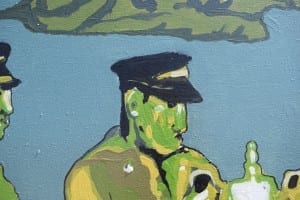
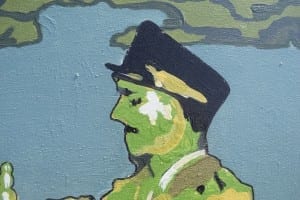
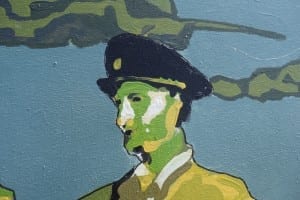
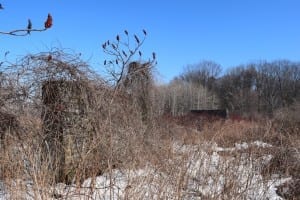
Interesting. As a child, I spent 7 memorable years at the Army Camp and Staff House. The former were barracks used by troops during WW 2. The Staff House was a large wooden apartment complex housing the hundreds of young women who worked shifts at the Small Arms during the war. We lived at both sites. I probably romped over every square foot of those fields, and the rifle range to the west; great swimming spots in the summer down at the lake. There were even schools in both locations, since the “residents” did not pay taxes to Peel County. They were, in reality, Toronto’s first venture into subsidized/emergency housing. Many of my friends eventually relocated to Regent Park. I could write a book about those times, and the many amazing folks who lived in those two locations. During the Korean War, my mother had a part-time job at the Small Arms. During the summers we got used to the sounds of Bren guns being test fired. I would love to hear from anyone who shared those experiences. There were hordes of kids who grew up in the AC/SH.
I have a few visual memories dating back to the 1930s. My stepfather, Ernest G. Stock, served with the Queen’s Own Rifles militia regiment and was a member of the Bisley shooting team that competed against other Commonwealth and Empire teams. At the age of four, I remember, my mother and I, and probably my older sister, would accompany Ernie to the range, where we would have a picnic. I can remember running around with other small children and being awed at the amount of space available to us.
Don Cumming I remember Ernie Stock very well. He was a member of the Maple Leaf Rifle Club (QOR shooters) and taught probably hundreds of us how to shoot. He did so well that several of us, including me, got good enough to be invited into the club where we were proud to be in his company. There are a few photo’s of Ernie in The Queen’s Own Rifles Museum website, Maple Leaf Club section.
Mike Holland, ex-RSM, The QOR of C
Jaan Pill. Long Branch rifle range versus ranges. When I fired weaponry there in the 1950s there were 100, 200, 300, 500 and 700 yard ranges stacked one behind the other all using the same targets located behind the “butts”. No one used the closer ranges while someone else used the father ranges as they likely would get shot from behind. At any one time it was used at one range. But it was capable of many different firing distances (ranges). Maybe that answers your question.
That enables me to much better understand the distinction between range and ranges, David. If I understand correctly, then (and I could be wrong), we can say that it was one range (looking at the facility as a whole), which, in turn, was made up of a number of ranges. Would that be the correct way to speak of the distinction?
Range vs ranges possible answer